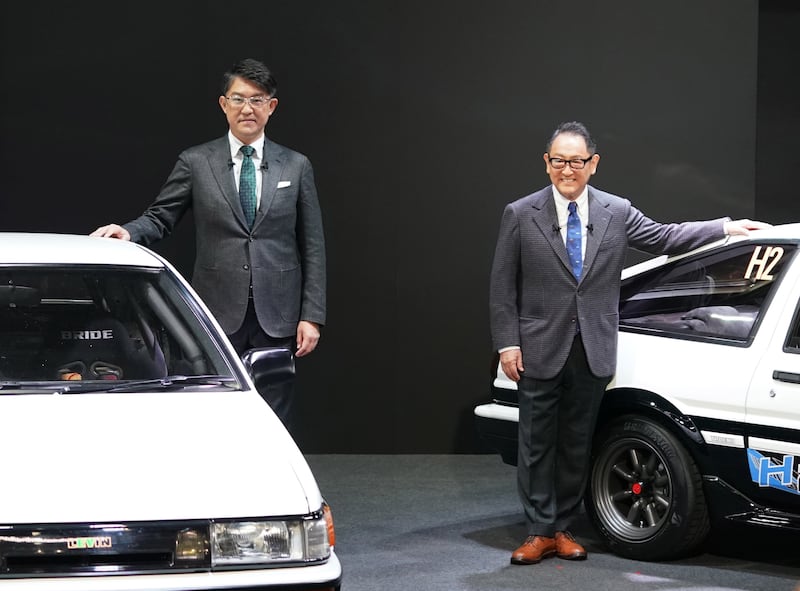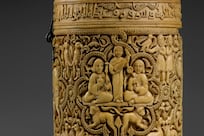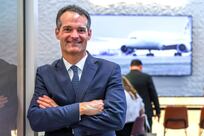When a vintage car shop in Nagano Prefecture found a buyer for a restored AE86 Corolla from a bygone era, nobody expected Koji Sato, then head of Toyota’s luxury brand Lexus, to walk in and banter with the shop owner before picking up the sports hatchback.
Mr Sato, 53, was handed a different set of keys on Saturday as chief executive of the world’s largest carmaker. Instead of romanticising Toyota’s past, he will need to keep a steady gaze on its future.
Toyota, along with the rest of the $2.86 trillion global vehicle industry, faces a once-in-a-lifetime upheaval in the shift to electrification and automation that has already produced a few early winners, most notably Tesla.
As the transition to EVs accelerates at a faster-than-anticipated clip, the big question is which, if any, of the incumbents — from Toyota and Volkswagen to Ford Motor and General Motors — can navigate their way and survive.
“The new wave is about to come,” said Koji Endo, managing director of SBI Securities. “All those Japanese makers have to be well prepared before it becomes too late.”
When announcing his leadership team in February, Mr Sato said he intends to take a bolder and faster “EV first” approach, promising to overhaul battery production and manufacturing platforms by 2026 with Lexus as the strategy’s centrepiece. But so far, no concrete details have emerged.
At the same event, Mr Sato confirmed Toyota’s multipronged approach touted by Akio Toyoda, the chief executive for the past 14 years who will become chairman, a seat that will let him continue to exert influence over the car maker’s strategy.
“Mr Sato has become captain of the ship, but Toyota is a giant ship and a change in executive leadership won’t make it change course right away,” said Bloomberg Intelligence analyst Tatsuo Yoshida. “And of course, the owner of the ship is still Akio Toyoda.”
Until now, Mr Toyoda had consistently emphasised the need for the company founded by his grandfather to spread its bets across different technologies — from batteries, hybrids, hydrogen and legacy combustion engines — to serve customers and successfully transition to a post-fossil fuel future.
“We see potential in all available options,” Mr Sato said in March. Analysts are expecting him to announce his plans in the coming months, which could put Toyota in more direct competition with Tesla and China’s BYD, the two biggest EV players.
For Mr Sato, building a dedicated EV production platform from scratch will be an early challenge as he tries to expand battery EVs and regain some of the momentum seized by those two rivals.
“The big question is whether it’s a plan of his own creation or one meant to avoid embarrassing his predecessor,” said Seiji Sugiura, an analyst at Tokai Tokyo Research.
In December 2021, Toyota set out to sell 3.5 million EVs annually by 2030. Battery EVs accounted for just 16,000 of the 9.5 million cars it sold in the fiscal year ending March 2022, leading critics again to decry the company’s hesitation to commit to a fully electrified line-up, or put forward a plan to phase out petrol-powered cars and decarbonise by 2050.
Expectations were high last year when Toyota introduced its inaugural EV, the bZ4X. That ended in a loss of face, however, when thousands of cars were recalled because of that the weren’t bolted on tightly enough.
While sales resumed in October, Mr Sato will have to prove that Toyota’s battery-based EVs are ready for the limelight.
Much of that depends on the executive team behind Mr Sato. Toyota has been known to have a strong bench of vice presidents.
Among the all-male senior management team, Hiroki Nakajima became chief technology officer, Yoichi Miyazaki was appointed chief financial officer while Simon Humphries was named chief branding officer.
“The new chief executive is young, but Akio’s old guard remains in place,” said Yoshio Tsukuda, director of the Tsukuda Mobility Institute. “They’re still not sure Mr Sato and his team can be entrusted with everything quite yet.”
The exchange at the used-car shop in Nagano last year offered a glimpse into Mr Sato’s leadership style. He’s known for his relaxed demeanour and a quick smile, traits that helped the young engineer climb the ranks at Lexus before being tapped on the shoulder to lead Toyota.
“An enthusiast is better poised to understand what customers want,” said Toshio Fujimura, a former Toyota engineer who is now a professor at the Aichi Institute of Technology. “It makes sense for a car company to be led by someone who loves cars.”
The AE86, which began production in 1983, quickly became popular in Japan but reached cult status in the 1990s after it was popularised by the anime Initial D. When he came across a pristine model restored to near-stock condition, Mr Sato said he couldn’t help himself.
“This car represents my youth,” Mr Sato said in a video posted in December on the shop’s YouTube channel. “I know this car has a big following and many people adore it.”






